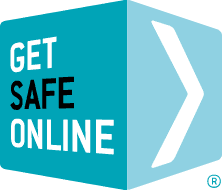The risks
- Bogus charity sites – fake websites for charities that do not exist, such as temporary fraudulent websites set up during well publicised disasters (for example famines and earthquakes).
- Phishing emails – emails sent to you attempting to trick you into disclosing your bank details and passwords.
- Fraud resulting from making payments over unsecured web pages.
- Identity theft caused by viruses or spyware, giving criminals access to your bank account and other personal information stored on your computer.
Donating safely
To ensure you are donating safely:
- Visit the charity’s own website by typing the website address into the browser yourself, rather than clicking on a hyperlink embedded in an email. Check the web address online with the relevant charity regulator or by calling the charity itself.
- Before you donate any money, check that the website you are on is secure. There should be a padlock symbol in the browser window frame, which appears when you attempt to log in or register. Be sure that the padlock is not on the page itself – this is a sign that the site could be fraudulent.. The web address should begin with ‘https://’. The ‘s’ stands for ‘secure’.
- If you receive unsolicited emails from charities you have never heard of or have no association with, do not respond and do not click on links contained in them. Instead, delete them.
- Do not respond to requests to donate through a money transfer company such as Western Union or MoneyGram, as this is a tactic commonly used in scams.
- Ensure that the charity is genuine before divulging personal details, or debit/credit card or online banking information. The Verified by Visa, MasterCard SecureCode and American Express SafeKey schemes all offer additional safeguards for debit/credit card payments.
- You could consider supporting individual fundraisers by donating through generic giving websites, for which you should read reviews beforehand.
- If you are still in any doubt, a legitimate charity will happily advise you on other ways to give on their website or via a phone call.
- If you think you may have given your account details to an impostor or bogus charity, contact your bank immediately.
